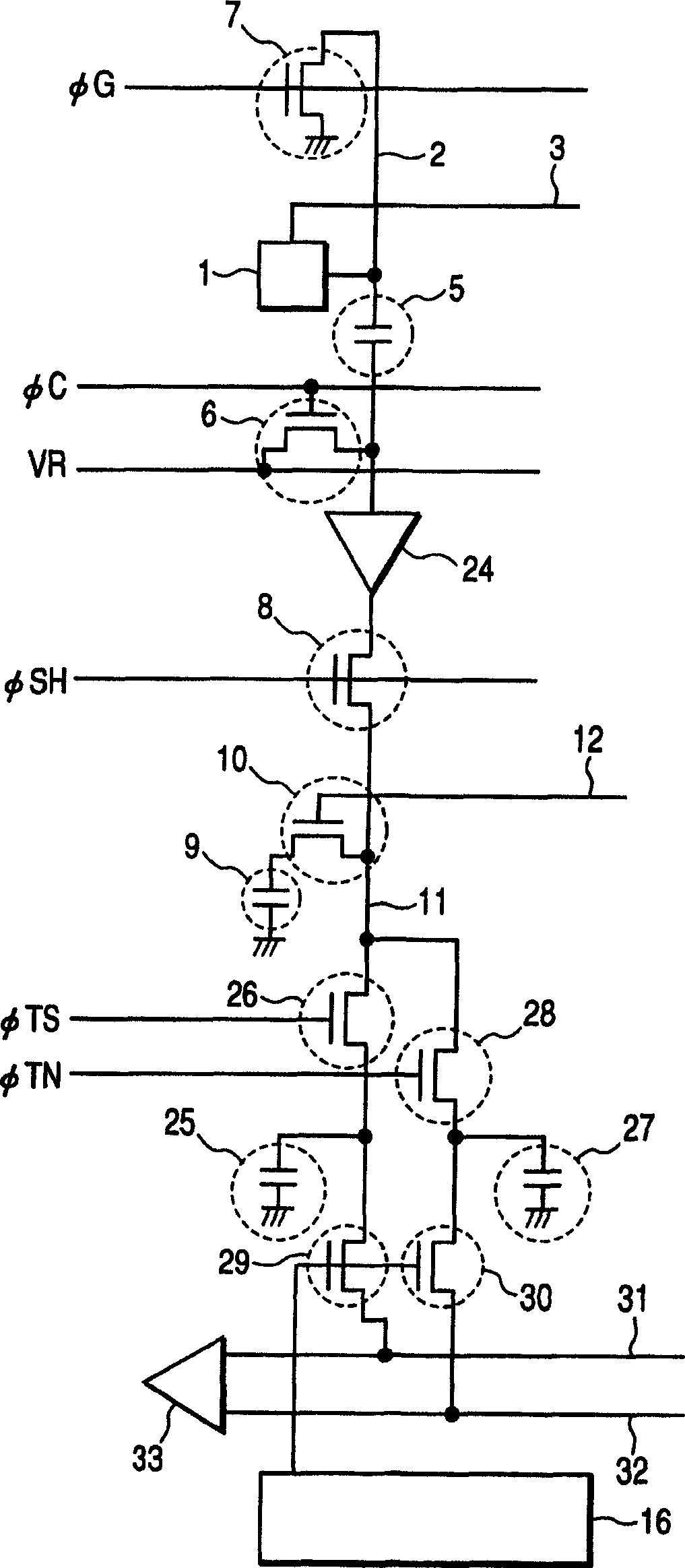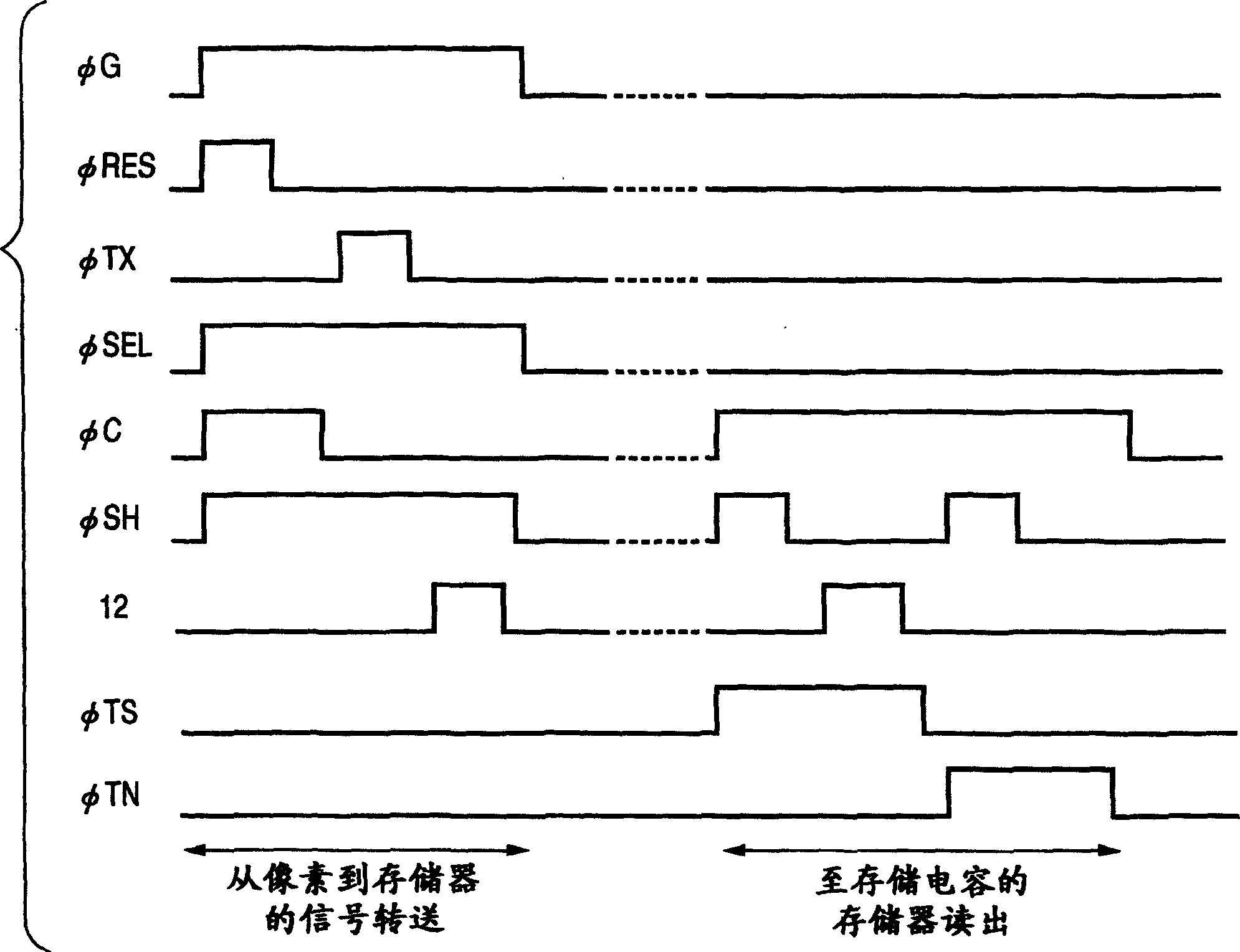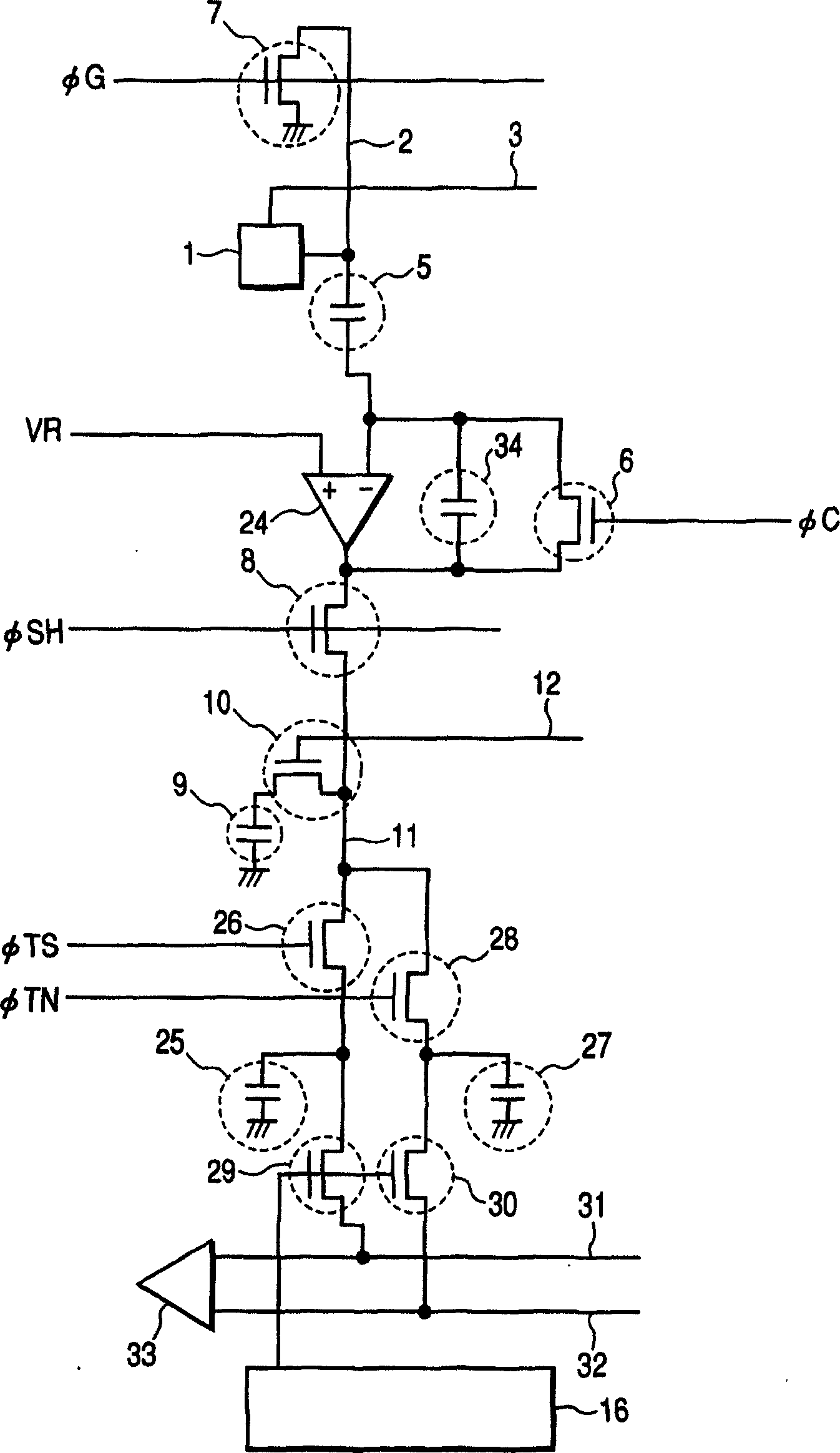Solid-state image pickup device and camera using the same solid-state image pickup device
A solid-state imaging device and pixel technology, which is applied in image communication, color TV components, and TV system components, etc., can solve problems such as reduction, and achieve the effect of small time deviation and easy design.
- Summary
- Abstract
- Description
- Claims
- Application Information
AI Technical Summary
Problems solved by technology
Method used
Image
Examples
Embodiment approach 1
[0028] figure 1 It is a circuit diagram of a sensor along a signal line from a pixel to a sensor output in Embodiment 1 of the present invention. Here, for the sake of simplicity, one pixel, one storage unit, and one column of readout devices are shown, but in fact it is as follows Figure 8 The pixels and memory cells shown are arranged in two dimensions, and a readout device is provided for each column. Also in Figure 8 3×3 pixels and storage units are shown in the figure for simple pixels and storage units, but the number of pixels and storage units is set according to needs, and the number of storage units can also be less than the number of pixels. For example, when signals from a plurality of pixels are added or thinned out and stored in storage units, the number of storage units may be less than the number of pixels, but of course the number of storage units corresponding to the number of pixels required to form an image is required number. For example, a memory uni...
Embodiment approach 2
[0039] image 3 A circuit diagram of a sensor along a signal line from a pixel to an output sensor in Embodiment 2 of the present invention is shown. exist image 3 Among them, the column amplifier 24 is a feedback amplifier whose output is transmitted to the negative input terminal via the coupling capacitor 34 . Thus, the gain of the column amplifier 24 is determined by the ratio of the coupling capacitor 5 and the coupling capacitor 34 . The positive input terminal (+) is fixed at the clamp potential VR. The negative input terminal (-) is clamped at the clamp potential VR by applying the pulse φC to the clamp transistor 6 because the above-mentioned two input terminals are in a virtual short-circuit state. Thus, the pulse timing and figure 2 The pulse timings of Embodiment 1 shown are the same. But when image 3 The circuit in is more suitable for the present invention in that the coupling capacitor 5 used for clamping also serves to determine the gain of the column ...
Embodiment approach 3
[0041] Figure 4 A circuit diagram of a sensor along a signal line from a pixel to a sensor output in Embodiment 3 of the present invention is shown. In this figure, a memory with an amplification function in the cell is used. For example, as disclosed in US Pat. No. 5,805,429, an amplified analog memory cell already exists. exist Figure 4 Among them, the memory cell 35 is composed of an amplification transistor 36 , a memory selection transistor 37 , a write transistor 10 , and a memory cell capacitor 9 .
[0042] The current supply transistor 38 supplies a current so that the amplification transistor 36 operates as a source follower. In the third embodiment of the present invention, this amplified frame memory is used instead of the DRAM type memory used in the first and second embodiments.
[0043] Figure 5 It is a pulse timing chart showing the operation of the sensor according to Embodiment 3 of the present invention. according to Figure 4 , Figure 5 Describe ...
PUM
 Login to View More
Login to View More Abstract
Description
Claims
Application Information
 Login to View More
Login to View More - R&D
- Intellectual Property
- Life Sciences
- Materials
- Tech Scout
- Unparalleled Data Quality
- Higher Quality Content
- 60% Fewer Hallucinations
Browse by: Latest US Patents, China's latest patents, Technical Efficacy Thesaurus, Application Domain, Technology Topic, Popular Technical Reports.
© 2025 PatSnap. All rights reserved.Legal|Privacy policy|Modern Slavery Act Transparency Statement|Sitemap|About US| Contact US: help@patsnap.com



